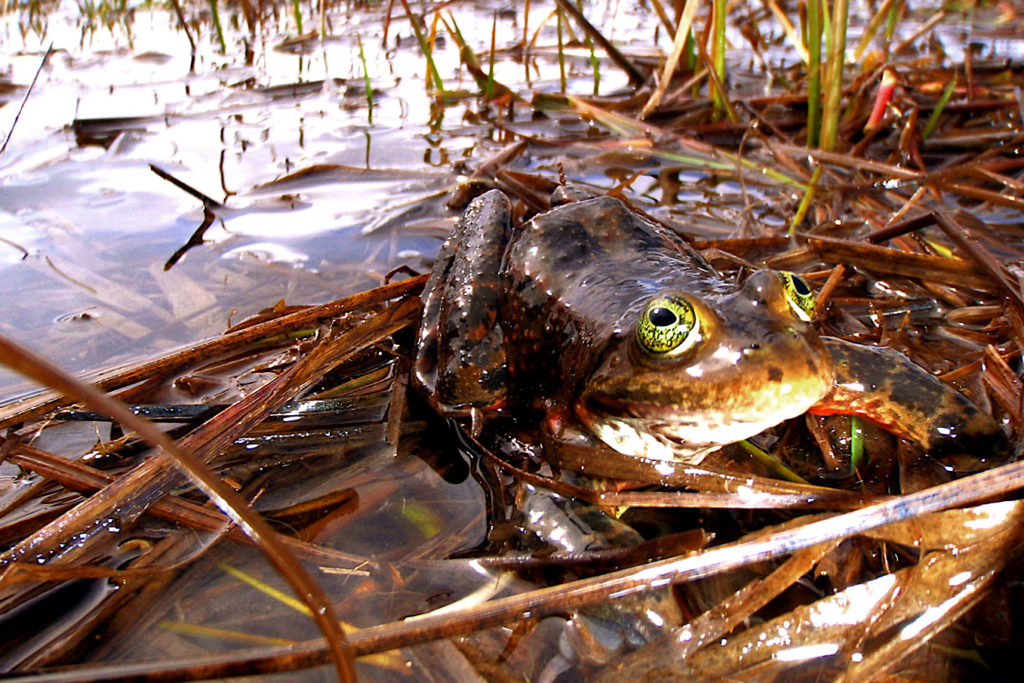
A big-eyed, water-loving frog about the size of a business card is helping keep expenses down at Bonneville Power Administration.
The Oregon spotted frog, a threatened species according to the U.S. Fish & Wildlife Service, is making its home in the marshy areas beneath BPA’s high-voltage lines.
This gives the federal power provider to millions in the Northwest, including the members of 54 electric cooperatives, more than enough reasons to sustain its low-cost rights-of-way maintenance practices.
“Conserving frogs saves money,” said Jonnel Deacon, a physical scientist with BPA in Portland, Oregon.
“These frogs prefer low-growing grasses rather than trees, not unlike what BPA grows under its lines to facilitate vegetation management,” Deacon said. “Our goals line up very well with Fish & Wildlife’s goals: Maintain vegetation and maintain the frog’s habitat.”
BPA first learned of the plight of this little brown amphibian a couple of years ago when it routinely examined a species list from the agency in preparation for work on a project in Washington state. A site survey with FWS last year turned up several spotted frog egg masses.
“We were actually in conversations with Fish & Wildlife before the frog was listed,” said Deacon. “They had monitoring data on the frog and had a good idea it would be under the power lines.”
The frog’s population has endured significant wetland habitat loss due to agriculture, construction and bullfrog predation, he said. Invasive plants like reed canary grass also threaten the frog, which depends on shallow pools for food sources and reproduction.
BPA’s transmission corridors offer the frog a perfect respite: long stretches of unbroken grassland with an abundance of puddles.
“BPA didn’t create this habitat, but what we are doing is maintaining the habitat,” said Deacon.
That means limiting construction or other disruptive activities under these lines and removing invasive species by spot herbicide applications. Utility vehicles are prohibited from driving off road following a rainfall, and workers’ boots and gear must be disinfected to limit contaminants entering the habitat.
BPA also cultivates low-growing shrubs and flowering plants that are beneficial for at-risk pollinators. These techniques can save BPA on vegetation management, said Deacon.
“We promote the low-growing grasses, and that means BPA can spend less money and keep our rates down,” he said.
Read More:
Bats Gain New Summer Roosts in Converted Utility Poles
Decision on Federal Protection for Monarch Butterfly Pushed to December 2020